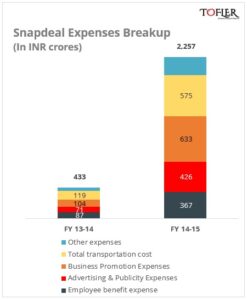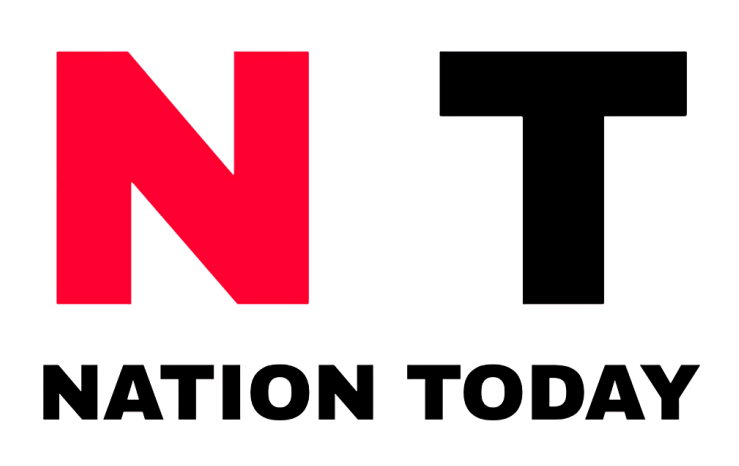Snapdeal, a prominent player in the Indian e-commerce landscape, has traversed a compelling journey since its inception in 2010. Founded by Kunal Bahl and Rohit Bansal, the company quickly evolved from a daily deals platform to one of India’s largest online marketplaces. This case study delves into Snapdeal’s strategic decisions, challenges faced, and transformative initiatives that have shaped its trajectory.

Established in February 2010, the company initially operated as a daily deals platform, offering discounted deals to users. Recognizing the potential in the burgeoning e-commerce sector, the founders pivoted in October 2011 to create a comprehensive online marketplace. This strategic shift laid the foundation for Snapdeal’s future growth. Snapdeal’s early growth was marked by strategic funding rounds, with key investors recognizing its potential in the evolving Indian e-commerce landscape. These investments provided the necessary capital for the company to expand its operations, implement technological innovations, and establish itself as a major player in the industry.
Snapdeal’s Funding Rounds:
Founding Investment (2011):

Snapdeal received its first significant investment in January 2011, amounting to US$12 million. This investment came from Nexus Venture Partners and Indo-US Venture Partners, setting the stage for the company’s initial expansion.
Strategic Rounds in 2011:
In July 2011, Snapdeal secured funds amounting to US$45 million in another round. Bessemer Venture Partners and existing investors participated in this round, providing essential capital for the company’s early growth.
Year of Substantial Investments (2014):
February 2014 marked a pivotal moment for Snapdeal as it raised US$133 million in a round led by eBay. The same month witnessed another substantial investment of US$105 million from BlackRock, Temasek Holdings, PremjiInvest, and others. These investments solidified Snapdeal’s position and demonstrated investor confidence in its potential.
SoftBank’s Game-Changing Investment (2014):

In October 2014, SoftBank invested a staggering US$647 million in Snapdeal, becoming the largest shareholder in the company. This capital injection played a crucial role in propelling Snapdeal to the forefront of the Indian e-commerce scene.
Alibaba, Foxconn, and SoftBank Collaboration (2015):
August 2015 saw a significant collaboration between Alibaba Group, Foxconn, and SoftBank, resulting in a massive investment of US$500 million in Snapdeal. This injection of funds further fueled the company’s expansion and technological advancements.
Ontario Teachers’ Pension Plan Investment (2016):
In February 2016, Ontario Teachers’ Pension Plan and Brother Fortune Apparel invested US$200 million in Snapdeal at a valuation
of US$6.5 billion. Alongside this investment, notable leaders from Airtel, Adobe, and other industries joined Snapdeal’s leadership team.
Fundraising in 2017:
In May 2017, company raised funding worth ₹113 crore from Nexus Venture Partners. This round of funding demonstrated continued
investor support, even amid challenges and strategic shifts.
Strategic Acquisitions:
Company’s strategic acquisitions played a pivotal role in its growth. From the purchase of Grabbon.com in 2010 to the acquisition of
eSportsBuy.com, Shopo.in, Doozton, and Wishpicker, Snapdeal strategically expanded its offerings. The acquisition of Freecharge in 2015
marked a significant foray into the mobile payments sector.
Unsuccessful Merger and Snapdeal 2.0:

In Q2 2016, reports surfaced regarding SoftBank Group’s attempt to engineer a merger between Snapdeal and Flipkart. Despite prolonged discussions, the deal collapsed in July 2017, citing disagreements over valuation and special payouts to early investors. Undeterred, Snapdeal embraced a new strategy termed “Snapdeal 2.0.” This initiative involved selling non-core businesses, such as Freecharge and Vulcan Express, to focus on strengthening its core e-commerce marketplace. The Snapdeal 2.0 strategy proved instrumental in the company’s resurgence. Between 2017 and 2021, Snapdeal witnessed a remarkable 74% revenue growth at its peak, coupled with a staggering 95% reduction in losses. The number of unique customers on the platform tripled to 27 million, with over 90% of orders originating from non-metro users.
Building an Asset-Light Model:

Central to Snapdeal 2.0’s success was the adoption of an asset-light operating model tailored for the value e-commerce segment. By decentralizing logistics and minimizing inventory, Snapdeal effectively reduced operating costs. The company strategically recreated the vibrant experiences of India’s traditional bazaars online, engaging users through video, voice, and vernacular elements. This approach not only catered to existing users but also attracted new customers from non-metro regions. In a bold move, Snapdeal announced plans in 2021 to enter the offline retail space, targeting smaller Indian cities. This expansion aligns with the company’s commitment to serve the diverse needs of customers beyond major urban centers.
Controversies:
Snapdeal faced challenges, including controversies such as the Diwali campaign with Aamir Khan and reported sales of counterfeit products.
Despite these obstacles, Snapdeal responded strategically, asserting its commitment to distinguishing between the roles of brands, sellers, and platforms. The company’s membership in the International Trademark Association underscores its dedication to protecting intellectual property.
Diwali Campaign with Aamir Khan (2015):

In March 2015, Snapdeal’s Diwali campaign, “Dil Ki Deal,” featuring Bollywood actor Aamir Khan stirred controversy. While the campaign aimed to promote the platform during the festive season, Aamir Khan’s comments made in his capacity sparked public outrage. The controversy highlighted the challenges companies face when aligning with celebrity endorsements and managing potential fallout from personal statements made by brand ambassadors.
Reported Sales of Counterfeit Products (2020-2021):
In January 2021, the Office of the United States Trade Representative (USTR) identified Snapdeal as a marketplace where counterfeit
products were allegedly being sold. The USTR labeled Snapdeal as a “notorious market” in its 2020 report, a designation it had held since 2019. company vehemently denied these allegations, asserting that the report reflected a biased view and failed to distinguish between the roles of brands, sellers, and platforms. The company requested retractions and issued notices to the USTR, emphasizing its commitment to adhering to applicable laws and protecting intellectual property. Subsequently, Snapdeal was dropped from the USTR’s notorious markets report in 2022.
Integration with ONDC (2023):
While not a traditional controversy, Snapdeal’s integration with the government-led Open Network for Digital Commerce (ONDC) in March 2023 raised questions and discussions. Some observers expressed concerns about the implications of such integration, particularly in terms of data privacy and market dynamics. The move, however, aligns with company’s strategy to serve non-metro regions and expand its product range. The integration underscores the ongoing debate around the role of e-commerce platforms in shaping the digital economy.
These controversies reflect the multifaceted challenges that company has encountered in its journey. From managing celebrity endorsements and navigating the complexities of intellectual property concerns to integrating with government-led initiatives, the company has demonstrated resilience in addressing and responding to controversies. Snapdeal’s ability to navigate these issues contributes to its evolving narrative within the dynamic e-commerce landscape in India. In March 2023, Snapdeal’s integration with the government-led Open Network for Digital Commerce (ONDC) highlighted its commitment to India’s non-metro regions. Generating over 86% of its business from these areas, Snapdeal expanded its product range to include home products, fashion, and personal care.
Financial Landscape and IPO Challenges:

Despite a history of successful fundraising, the company faced challenges in the tech stock market. In December 2022, the company
decided to cancel its $152 million IPO due to unfavorable market conditions. This decision showcased company’s adaptability and
strategic reassessment in response to broader market trends. Snapdeal’s funding history reflects investor confidence, with key investments from entities like SoftBank, Alibaba Group, and eBay. However, in December 2022, the company canceled its $152 million IPO due to unfavorable market conditions, signaling its adaptability in response to industry trends.
Snapdeal’s journey is a testament to its resilience, adaptability, and commitment to serving the diverse needs of Indian consumers. The strategic shifts, innovative approaches, and emphasis on the value e-commerce segment have positioned Snapdeal as a key player in India’s evolving e-commerce landscape. As the company continues to navigate challenges and explore new frontiers, its story remains compelling, attracting viewers eager to witness the next chapter in the Snapdeal saga.
For more such articles visit NationToday

